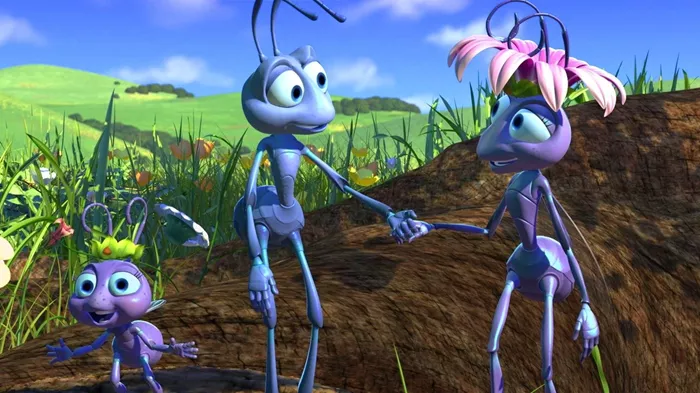“A Bug’s Life,” released by Pixar Animation Studios in 1998, stands as a landmark in animated cinema for its innovative storytelling and groundbreaking computer animation. The film, which explores themes of individuality, community, and courage, is set in a world that is simultaneously vast and minute—a world where a tiny colony of ants struggles for survival against the oppressive demands of a gang of marauding grasshoppers. In this detailed exploration, we delve into the various settings within “A Bug’s Life”, analyzing how they contribute to the film’s narrative and themes.
Understanding the Microcosmic World
The Ant Colony: The Heart of the Narrative
The main setting of “A Bug’s Life” is the ant colony, which is located in what appears to be a typical, nondescript meadow. The colony is actually situated on a small island in the middle of a river, surrounded by grass and other flora that tower over the ants like towering trees. This location symbolizes both the isolation and vulnerability of the ants, emphasizing their smallness in a large world.
The design of the ant colony is meticulously detailed to reflect the organized, communal nature of ant life. The ants’ homes are built from natural materials like leaves and sticks, showcasing Pixar’s commitment to creating a believable, immersive world where the viewer can truly sense the scale from the perspective of an ant.
The City: A Hub of Bug Diversity
A pivotal setting within the narrative is the city, which the protagonist Flik ventures into in order to find warriors willing to defend his colony from the grasshoppers. Unlike the structured, monotonous life of the ant colony, the city is a bustling, chaotic place that resembles a miniature urban environment littered with human trash that serves as buildings and landmarks for the insects.
The city is significant for its portrayal of diversity within the insect world. Here, various species of bugs coexist, from the glamorous Gypsy Moth to the walking stick insect, each character bringing their own unique traits and backgrounds to the film. This setting serves as a stark contrast to the uniformity of the ant colony, emphasizing the theme of individuality and the strength found in diversity.
The Bird’s Nest: A Place of Danger and Growth
Another critical setting in the film is the bird’s nest. This location serves as a crucial plot point, where Flik and the circus bugs learn to work together and where they concoct the plan to fake a bird attack to scare off the grasshoppers. The bird’s nest, situated high up in a tree, introduces a level of peril not seen in other areas of the film, highlighting the risks the characters are willing to take for their community.
Thematic Implications of the Settings
Community and Isolation
The physical layout of the ant colony on an island reflects themes of isolation and community. The ants, though numerous, are cut off from the rest of the world, relying on each other for survival and sustenance. This isolation makes their interactions with the other bug species in the city even more impactful, as it brings the realization of a larger world full of potential allies.
Courage and Exploration
Flik’s journey to the city represents a significant thematic element of courage and the spirit of exploration. It underscores the narrative’s encouragement of stepping out of one’s comfort zone as a means to bring about change. The city, as a place of myriad possibilities and dangers, symbolizes the rewards and risks of venturing into the unknown.
Unity and Diversity
The film’s settings also explore the theme of unity amidst diversity. While the ant colony shows unity in uniformity, the city reveals that strength can also come from diversity. The circus bugs, each different from the others, come together to form a formidable team that ultimately helps the ants in their struggle against the grasshoppers.
Conclusion
The settings of “A Bug’s Life” are crafted not just to serve as backdrops for the film’s action but to enrich its narrative and highlight its themes. From the isolated ant colony to the diverse and chaotic city, each location in “A Bug’s Life” is imbued with meaning and purpose, reflecting the central messages of community, courage, and diversity. Through its innovative animation and thoughtful setting design, “A Bug’s Life” remains a poignant example of how environment shapes storytelling in animation, offering audiences a window into a world both small and vast, where even the tiniest creatures can have the biggest hearts.

